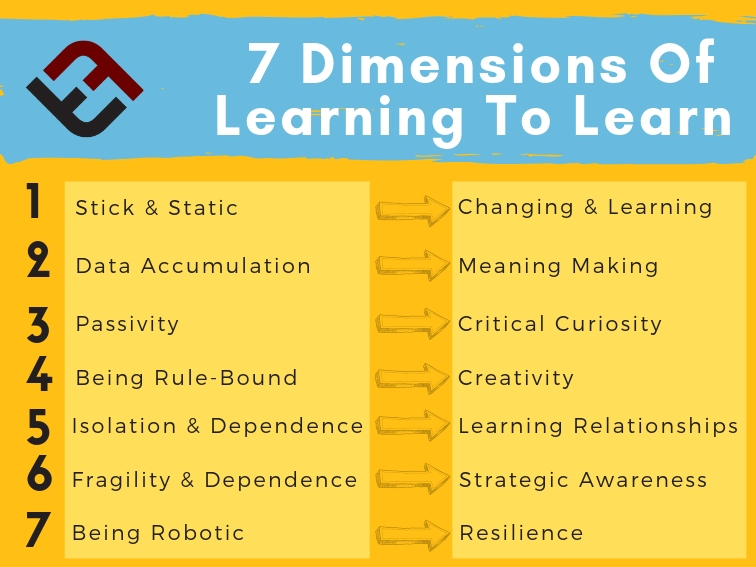 Learning To Learning: 7 Critical Shifts
Learning To Learning: 7 Critical Shifts
by TeachThought Staff
Guy Claxton is professor of education at Bristol University, and author of Hare Brain, Tortoise Mind How Intelligence Increases When You Think Less (1997). Among other concepts, he is interested in how people learn.
And so are we, so that’s awfully convenient. At teachingexpertise, they recently overviewed Claxton’s work, including four ‘new Rs’:
-
“Resilience: ‘being ready, willing and able to lock on to learning’. Being able to stick with difficulty and cope with feelings such as fear and frustration.
-
Resourcefulness: ‘being ready, willing and able to learn in different ways’. Having a variety of learning strategies and knowing when to use them.
-
Reflection: ‘being ready, willing and able to become more strategic about learning’. Getting to know our own strengths and weaknesses.
-
Relationships: ‘being ready, willing and able to learn alone and with others’.”
These, while interesting, parallel the 4 Cs (critical thinking, communication, collaboration, and creativity), so perhaps more immediately interesting are the 7 dimensions of effective learning shown below.
FROM –> TO
Stick & Static –> Changing & Learning
Data Accumulation –> Meaning Making
Passivity –> Critical Curiosity
Being Rule-Bound –> Creativity
Isolation & Dependence –> Learning Relationships
Being Robotic –> Strategic Awareness
Fragility & Dependence –> Resilience
A quick glance reveals the contrast between these dimensions and the structure of most public schools, and how much these suggest self-directed learning.
7 Dimensions Of Learning To Learn
More than anything else, the concept of self-directed, entrepreneurial learning and transfer stand out. Learning how to learn is very different than learning content. In the 21st century, access to content and resources is no longer in short supply, but rather access to learning pathways, and authentic reasons to learn, which is where meaning-making, critical curiosity, and resilience come in.
Making that shift in your own mind is important for these dimensions to be relevant–or even moderately useful–in your classroom. The shift is from learning content to learning how to learn.
The takeaways for teachers probably start with the role of the student in the learning process: voice, choice, personalization, self-direction, project-based learning, and other low-hanging fruit to make teaching more effective, sustainable, and driven by students rather than teachers.
More broadly, the conclusions are probably more related to educational structures, the form of curriculum, and school design.
Learning To Learn: 7 Critical Shifts